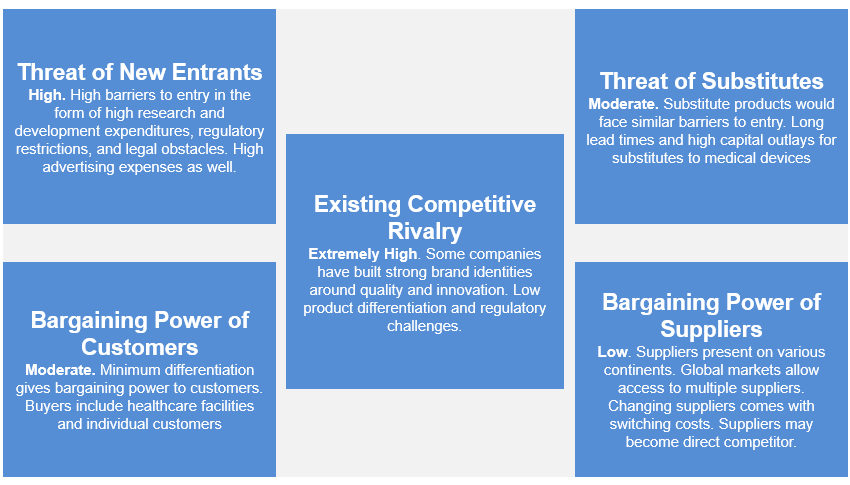Global Medical Devices Industry
The medical devices market consists of sale of medical equipment or devices and related services by entities that manufacture medical equipment or devices which are used in the diagnosis, treatment and monitoring of medical conditions.
Driven by tech innovation, aging populations, and chronic diseases, it's on track to hit USD 863.2 billion by 2030 1. The global medical devices industry is booming, and below is a quick breakdown of what’s shaping this massive sector.

Market Size and Growth:
- USD 456.8 billion in 2020 1
- The market size grew at a CAGR of 3.5% between 2015 and 2020 1
- Projected to reach USD 658 billion by 2030 at a CAGR of 5.5% 1
- North America leads, accounting for 39.7% of the global market in 2020.

What’s Included in the Industry?
The industry spans:
- Diagnostic imaging equipment
- In-vitro diagnostics
- Dental and ophthalmic devices
- Cardiovascular devices
- Hospital equipment and supplies
The USA leads the way
With a market size of about USD 256.2 billion in 2024 3, the USA is the largest medical device market in the world.

Emerging Market Potential:
Markets like India and China are witnessing rapid demand growth, driven by economic development and rising lifestyle diseases. 2

Top 7 Countries by Forecast Revenue (2030) 2
- USA
- China
- France
- Germany
- India
- Japan
- UK

Porter's Five Forces in the Medical Devices Industry:

Threat of New Entrants – High
High barriers to entry in the form of high research and development expenditures, regulatory restrictions, and legal obstacles. High advertising expenses as well.
Threat of Substitutes - Moderate.
Substitute products would face similar barriers to entry. Long lead times and high capital outlays for substitutes to medical devices.
Existing Competitive Rivalry - Extremely High
Some companies have built strong brand identities around quality and innovation. Low product differentiation and regulatory challenges.
Bargaining Power of Customers - Moderate
Minimum differentiation gives bargaining power to customers. Buyers include healthcare facilities and individual customers.
Bargaining Power of Suppliers - Low
Suppliers present on various continents. Global markets allow access to multiple suppliers. Changing suppliers comes with switching costs. Suppliers may become direct competitor.